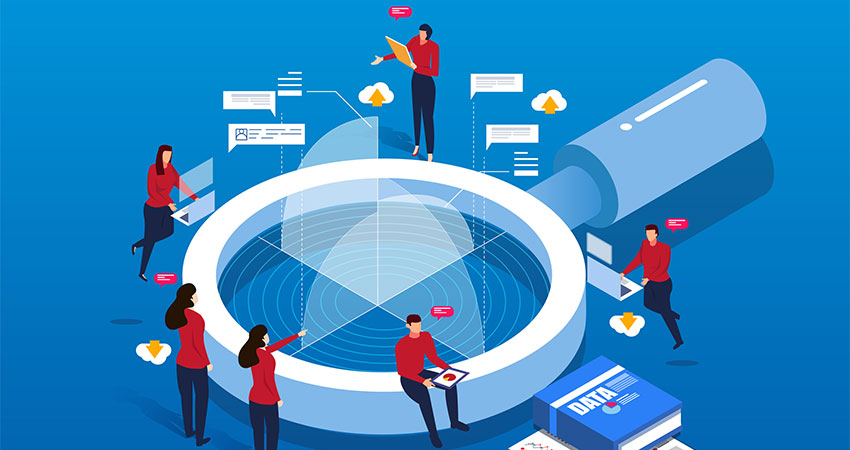Martech is experiencing unprecedented growth. In just the last decade, it grew 5,233%. Over the next few years, global spending on digital transformation is expected to reach $2.8 trillion. What’s driving this surge in digital strategy investment?
The majority of C-suite leaders say an improved customer experience is a top factor driving their digital transformation. More specifically, marketers’ focus has shifted from basic content management to identifying, creating and publishing personalized content at scale.
The new marketing paradigm requires real-time, 1:1 personalization, changing the messaging, content and channel at any moment to serve any individual based on their needs, while predicting future outcomes. To offer this level of personalization, marketers are investing in connected digital experience platforms, with integrated solutions for deploying immersive content experiences at scale, representing the new digital frontier.
Rise of AI and the New Frontier of Experience Management
Today, you must develop a holistic, technology-enabled content strategy in order to succeed. Consumers expect you to anticipate their needs and offer relevant suggestions before their initial contact. Fortunately, the majority of marketers understand this, with 77% acknowledging that real-time personalization is crucial to their company’s success, according to Adobe. And it certainly doesn’t hurt that personalization delivers 5x to 8x the ROI on marketing spend.
To achieve the level of personalization consumers demand, it’s imperative that marketers stay ahead of the digital evolution. Powerful martech tools, such as customer data platforms, AI-based personalization and digital asset management (DAM), help you make “next best action” decisions that future-proof your customer experience strategy.
Before we dive into the new customer experiences and marketing capabilities these platforms provide, let’s take a quick trip back in time to discover how we got here.
1990s: Modern internet formed, websites grow
Websites are built in a painstaking manner by internal IT departments over a period of years. Updates are rare and sites offer limited information and experience, mostly brochureware.
2000s: Websites go from nice-to-have to essential marketing channel
Content Management Systems (CMS) like Interwoven, Vignette and WordPress emerge with WYSIWYG capabilities, enabling marketers to create and edit content without the help of IT. But changing the experience requires developer intervention
2010s: Basis for the Digital Experience Platform (DXP) emerges
The focus begins to shift from managing content to managing experiences. Platforms like Adobe and Sitecore emerge, enabling marketers to build webpages using composable libraries of marketing assets, thanks to integrated DAM and content systems. Still, scale is limited by the output of any single worker and their ability to manually create content and set personalization rules for combining different assets together, based on assumptions about different personas.
Also, commerce and content remain disconnected, managed through disparate experience management and commerce solutions. This leaves customers with a disjointed, clunky experience and hinders marketers from using content to support their entire funnel.
Today: Holistic martech solutions power connected customer experiences
The marriage of omnichannel content and commerce is realized through DXPs like Episerver (now Optimizely), Sitecore and Adobe that seamlessly integrate the content and commerce sides of the funnel. Moreover, AI-powered CDPs, and DAMs allow marketers to deliver individualized customer experiences at scale. Finally, marketing goals and technological capabilities work in lockstep to deliver the future of experience management.
A holistic martech strategy delivers next-gen customer experiences
Providing personalized experiences is now table stakes. Every customer expects an experience as seamless, as suggestive, and as personalized as Amazon.
The speed at which personalization experiences are delivered will separate leaders from laggard. According to McKinsey, companies that outpace slower-moving peers drive 40% more of their revenue from personalization.
Fortunately, today’s martech platforms are designed to play well with each other and empower truly personalized experiences. Brands must develop the right content strategy and choose the optimal technology to support it, such as:
- Customer data management: Apple’s iOS 14 update and Google’s crackdown on cookies have signaled the death knell for third-party data. Marketers must pivot quickly to leveraging first-party data through CDPs. These platforms marry customer data across multiple channels, enabling marketers to deliver personalized experiences based on actual customer behavior (rather than broad assumptions).
- Marketing orchestration: Marketing workflow tools help marketers plan, develop and distribute content for marketing campaigns and power personalized experiences. Creation and collaboration take place in one centralized place, ensuring no permissions slip through the cracks while connecting content and assets from multiple systems.
- Digital asset management: all content assets can be managed from a single location for use across the marketing ecosystem. Different assets can be tagged for different personas, channels and formats, allowing marketers to deploy them at scale for use in personalized content experiences powered by AI.
- AI-powered personalization and experimentation: This is the last piece of the puzzle. Today’s digital experience platforms include powerful AI-governed optimization capabilities that rely on real-time behavior and first-party data collected via a Customer Data Platform (CDP). They can combine assets on a 1:1 basis that feels timely and relevant, driving engagement. Instead of manually developing the content experiences themselves – an approach that was always too slow – marketers can learn from experiments and AI to scale better digital outcomes.
Succeeding in the Next Phase of Experience Management
The past decade has witnessed the rise of an AI-driven content experience, and consumers expectations to match. In order to stay ahead of customer needs vs. reacting, you must make the right decisions when designing your digital transformation strategy. The right platforms and agency partners help you connect the dots, and understand the various tools will be leveraging customer data.
John Schneider is Chief Technology Officer of Whereoware

